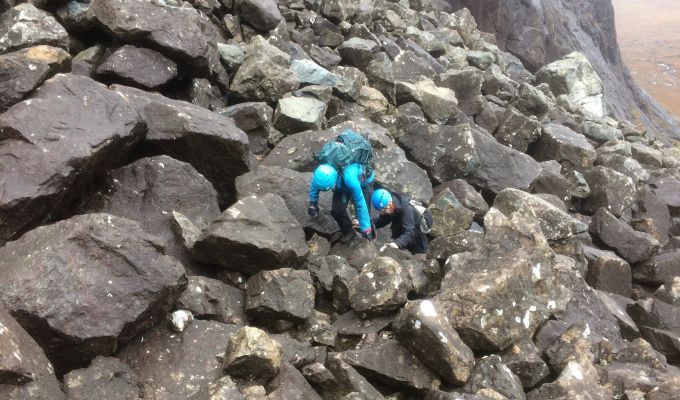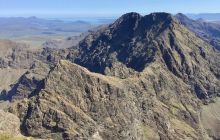A QUESTION OF TRUST IN SKYE'S BLACK CUILLIN
IT'S nearly 30 years since my first venture into Skye's Black Cuillin, but on every successive visit one piece of advice from the legendary Gerry Ackroyd has stayed with me: Trust everything – and trust nothing.
If it seemed a bit cryptic at the time, we soon learned what he meant. The scrambling to the country's roughest and toughest peaks follow tried and trusted routes, but that trust should only be extended so far.
Nothing is forever – and that is certainly the case in the Cuillin. Mountain landscapes are constantly changing. Most of the time that change moves at a glacial pace, and we will see little difference in our lifetimes. But sometimes it can be sudden and dramatic, that trusted hold we have used many times gone in an instant.
Gerry's mantra came to mind again this week with reports suggesting signs of rock instability on two of the popular Munro routes, one on the climb out of An Dorus to Sgurr a' Ghreadaidh, the other on Sgurr nan Gillean. It's always good to be aware of any potential problem, but the news is hardly a surprise. Rockfall is a constant risk, and everyone who climbs or scrambles amidst the rock chaos of this terrain knows the score.
Suggestions that there should be some 'pro-active' human involvement in addressing these issues should be resisted. Unless the situation becomes an immediate and unavoidable danger to life, nature should be allowed to take its course. Besides, if we started removing every rock with a crack in it, Skye's landscape would soon resemble that of the Netherlands.
On the ascent of Sgurr nan Eag all these years ago, we found it amusing to watch Gerry stop to ponder the position of one rock on the slope, then musing: “Hmm, that wasn't there last week.” To us this was the equivalent of finding a needle in a haystack and being able to figure out that it had previously been in a different position in the haystack. But his familiarity of the landscape was second to none, and there were many more examples of just how well he knew it.
He told how he had been nearby when The Gendarme, a prominent rock pillar on the west ridge of Sgurr nan Gillean, had come crashing down in the winter of 1986, the noise so great he heard it from the next corrie. He also told of another large boulder, regularly used to swing around on a ridge traverse, which suddenly dislodged and toppled over the edge after being in situ for millennia. Trust everything – and trust nothing.
Even without that expert knowledge of the terrain, there are times when you sense a slight change in circumstance. On one ascent of the In Pin, I became aware of the lack of a foothold which I was sure I had relied on before. It had only been a flake but its absence made me pause for thought.
More recently, during the traverse to the foot of the In Pin from Sgurr Mhic Choinnich, we passed a massive house-sized lump of rock which had recently become detached from the side of An Stac after being weakened by a lightning strike. The same series of storms had also created new debris danger above the boulder field on Sgurr Sgumain.
On that same trip, one hold came away in my hand as we picked a route to the summit of Am Basteir after coming off its lesser-visited Munro Top attachment, the Bhasteir Tooth. The black gabbro sheared off cleanly as if cut with a craft knife, precise lines revealing a gleaming silver interior, new life given to an old face.
Change is, and always has been, a constant, but wilder and more frequent weather events combined with a big increase in numbers walking the hills, may lead to a faster pace of change. Friends who recently revisited the Aonach Eagach in Glen Coe reckoned they noticed a difference in the security of some holds, the more polished surface of others, but that could just be the memory playing tricks.
There is no doubt, however, that erosion on many hill paths has increased: on a recent walk from Glen Doll I was concerned at the scale of collapse of the banking downstream from the bridge at Moulzie. This bridge had been rebuilt on more solid foundations after being washed away in a storm a few years back, but already the ravages of the river are being felt again. If it continues to deteriorate, this path will soon disappear.
It's not just on the Black Cuillin that it pays to constantly watch your step. Trust everything – and trust nothing.

